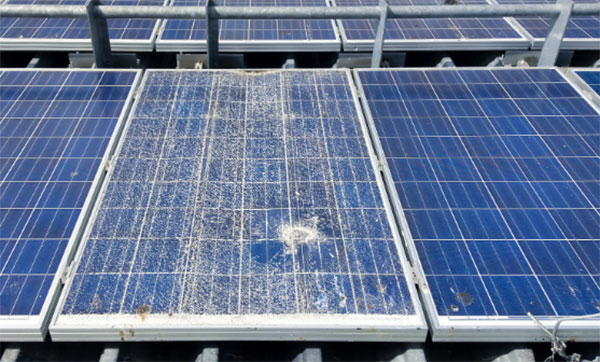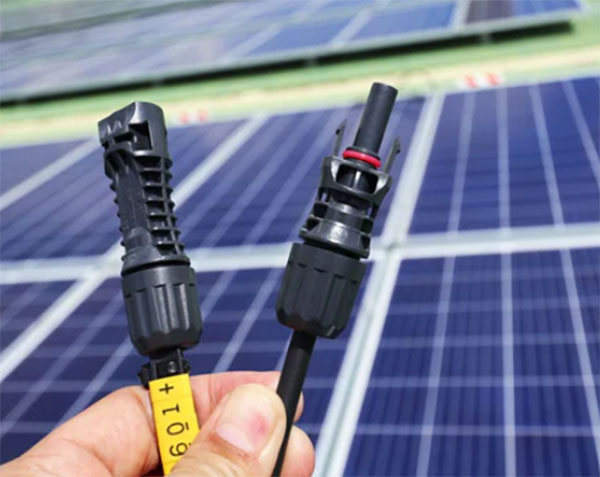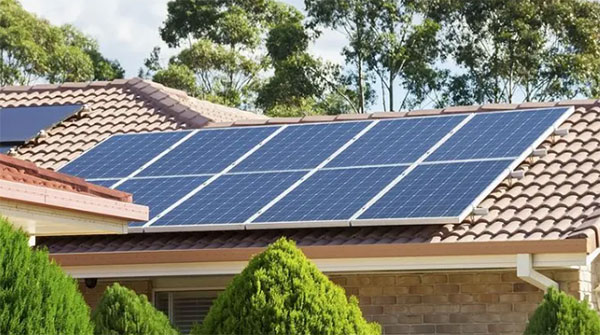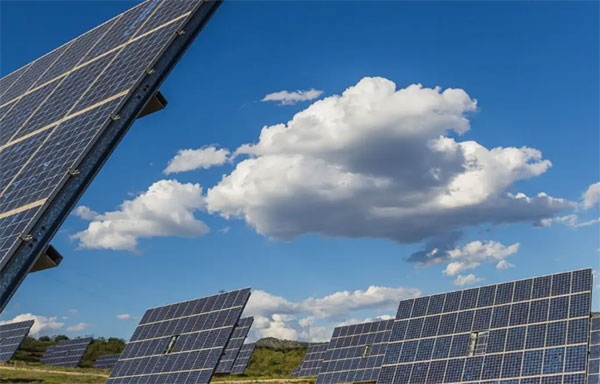Description
End-of-life solar panels are either recycled or disposed of, depending on their condition and local regulations.

End-of-Life Management for Solar Panels
The management of solar panels at the end of their life is a critical aspect of the sustainable use of solar energy. This process includes the safe and efficient disposal or recycling of old or damaged panels, which is essential to mitigate the environmental impact.
Recycling Processes for Solar Panels
Solar panel recycling involves several steps to recover valuable materials like silicon, silver, and aluminum. The process starts with the dismantling of panels, where the aluminum frame and junction box are removed. The remaining materials undergo thermal, chemical, or mechanical processing to separate and recover resources. For instance, thermal processing at temperatures above 500°C helps in delaminating the glass from the silicon cells. The success of recycling depends on factors like the panel's design, materials used, and the technology employed. The recycling rate for silicon-based panels can reach up to 95%.
Environmental Impact of Solar Panel Disposal
The disposal of solar panels, if not managed properly, can lead to significant environmental concerns. Panels contain hazardous materials like lead and cadmium, which can leach into the soil and water if disposed of in landfills. The carbon footprint of manufacturing and disposal processes also contributes to the overall environmental impact. However, advancements in recycling technologies aim to reduce this impact by recovering more materials for reuse, thereby decreasing the reliance on raw material extraction.
Current Policies and Regulations
Policies and regulations governing the end-of-life management of solar panels vary globally. In the European Union, the Waste Electrical and Electronic Equipment Directive (WEEE Directive) sets the framework for recycling e-waste, including solar panels. This directive mandates producers to finance the costs of collection, treatment, and recycling. In contrast, the United States lacks federal policies specifically for solar panel disposal, leaving the responsibility to state-level regulations and voluntary industry standards.

Decommissioning Solar Panels
Decommissioning solar panels is a comprehensive process, ensuring that panels at the end of their life are safely removed and processed. This process is critical for maintaining environmental safety and recycling valuable materials.
Steps in the Decommissioning Process
- Initial Assessment: Determine the panel's condition, age, and potential for reuse or recycling. Solar panels typically have a lifespan of 25-30 years.
- Safe Removal: Technicians carefully detach the panels to prevent damage to the roof structure and the panels themselves.
- Transportation: Panels are transported to recycling or disposal facilities. The transportation cost depends on the distance and quantity of panels.
- Recycling/Disposal: Panels are either recycled to extract valuable materials like silicon and silver or disposed of in compliance with environmental regulations.
The efficiency of this process is vital. For instance, recycling can recover up to 80% of the panel's original material value, while the cost of recycling can range from 20-30% of the panel's initial cost.
Challenges in Solar Panel Decommissioning
- Cost Considerations: The expenses associated with decommissioning can be substantial, particularly for large installations. These costs include labor, transportation, and processing fees.
- Technological Limitations: Current recycling technologies may not recover all materials efficiently, impacting the overall sustainability of solar energy.
- Regulatory Hurdles: Inconsistent regulations across regions can complicate the decommissioning process, especially for multinational companies.

Repurposing and Reusing Solar Panel Components
Exploring the opportunities for repurposing and reusing solar panel components opens up innovative avenues for sustainable practices. This approach not only extends the life of materials but also contributes to reducing waste and environmental impact.
Opportunities for Repurposing Materials
Solar panels contain several reusable materials that can be repurposed in various ways:
- Silicon Solar Cells: Often reused in new solar panels or other silicon-based products.
- Glass: Can be repurposed in glass products or as a raw material in industrial processes.
- Metals (Aluminum and Copper): Used in the construction, electrical, and automotive industries.
- Plastic Components: Transformed into recycled plastic products.
The
value of these materials depends on the market demand and the purity of the recycled product. For instance, recycled silicon can retain a significant portion of its original value, especially when high purity levels are maintained during the recycling process.
Innovations in Solar Panel Reuse
Innovations in the field of solar panel reuse focus on enhancing efficiency and reducing costs:
- Developing New Recycling Technologies: To improve the recovery rate of valuable materials and reduce recycling costs.
- Designing Panels for Easier Disassembly: Facilitating the extraction of reusable components.
- Creative Reuse in Architecture and Design: Using decommissioned solar panels in building materials or decorative elements.

Waste Management and Solar Panels
Effective waste management of solar panels is becoming increasingly important as the adoption of solar energy grows. The focus is on minimizing the environmental impact of solar panel waste and developing sustainable disposal and recycling strategies.
Waste Generation from Solar Panels
Solar panels become waste primarily at the end of their life, typically after 25 to 30 years of service. The waste generated includes glass, silicon, metals like aluminum and copper, and some hazardous materials like lead and cadmium in older models. The volume of solar panel waste is expected to reach several million tons globally by 2050, making it a significant environmental concern. The cost of managing this waste, which involves collection, transportation, and processing, can be substantial, impacting the overall sustainability of solar energy.
Strategies for Reducing Solar Panel Waste
Several strategies are essential to reduce the waste generated by solar panels:
Enhancing Panel Lifespan: Manufacturers focus on improving the durability and lifespan of solar panels. A longer lifespan means less frequent replacement and, consequently, less waste. For instance, advancements in materials and manufacturing techniques have enabled newer solar panels to maintain high efficiency levels for longer periods, reducing the need for early replacement.
Improving Recycling Techniques: Increasing the efficiency of recycling processes is critical. Modern recycling methods aim to recover up to 95% of certain materials from solar panels, which can be reused in new panels or other products.
Developing Sustainable Design Practices: Designing solar panels for easier disassembly and recycling is gaining attention. This approach involves using materials that are easier to separate and recycle, thus enhancing the overall recyclability of the panels.
Implementing Regulations and Policies: Governments are establishing regulations to manage solar panel waste effectively. These policies often include guidelines for disposal, incentives for recycling, and standards for manufacturers to encourage the production of more sustainable panels.
Public Awareness and Education: Raising awareness about the importance of proper solar panel disposal and recycling is crucial. Educating consumers and industry stakeholders about the environmental impact of solar panel waste can drive more sustainable practices.

Lifecycle Analysis of Solar Panels
Conducting a lifecycle analysis of solar panels is essential to understand their environmental impact and long-term sustainability. This analysis encompasses the entire life of a solar panel, from raw material extraction to manufacturing, use, and final disposal.
Assessing the Environmental Footprint
To evaluate the environmental footprint of solar panels, several factors are considered:
- Raw Material Extraction: Mining of materials like silicon, copper, and aluminum has an environmental impact. For instance, the extraction of these materials can lead to habitat destruction and soil erosion.
- Manufacturing Process: Involves energy consumption and emissions. The average energy payback time for solar panels, which is the time taken for a solar panel to generate the amount of energy used in its production, is currently estimated to be around 1 to 4 years.
- Operational Efficiency: Modern solar panels have an average efficiency of about 15-20%, with some models reaching up to 22%. This efficiency determines how effectively they convert sunlight into electricity.
- Emissions during Use: Solar panels produce clean energy with no direct emissions during operation, significantly reducing their environmental footprint compared to fossil fuels.
- End-of-Life Management: Includes recycling and waste disposal. Efficient recycling can recover up to 95% of certain materials.
These factors collectively contribute to the overall environmental impact of solar panels, which is generally lower compared to traditional energy sources.
Long-Term Sustainability of Solar Energy Solutions
The long-term sustainability of solar energy solutions depends on:
- Advancements in Technology: Continuous improvements in solar technology enhance efficiency and lifespan. For example, newer photovoltaic (PV) technologies have achieved significant gains in efficiency, reducing the amount of material needed per unit of power generated.
- Reduction in Manufacturing Costs: The cost of producing solar panels has been decreasing, making solar energy more accessible. The average cost of solar panels has dropped by more than 70% over the past decade.
- Government Policies and Incentives: Supportive policies, such as subsidies and tax incentives, play a crucial role in promoting the adoption of solar energy.
- Public Awareness and Adoption: Increasing awareness and acceptance of solar energy among consumers and businesses drive the market growth and sustainability.
- Recycling Infrastructure: Developing robust recycling facilities for solar panels ensures responsible end-of-life management, reducing waste and environmental impact.








